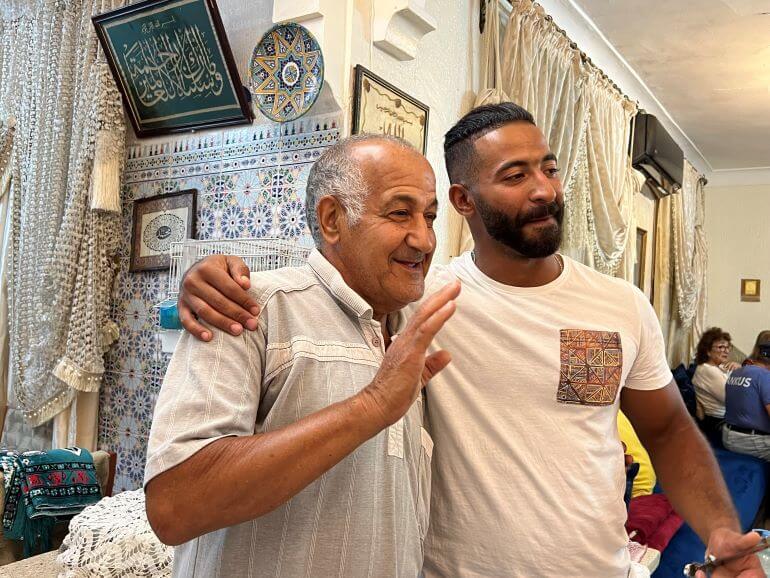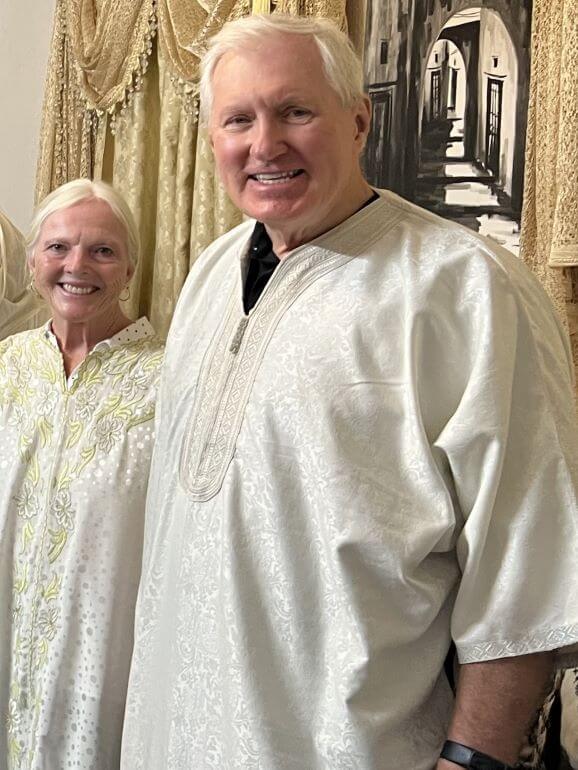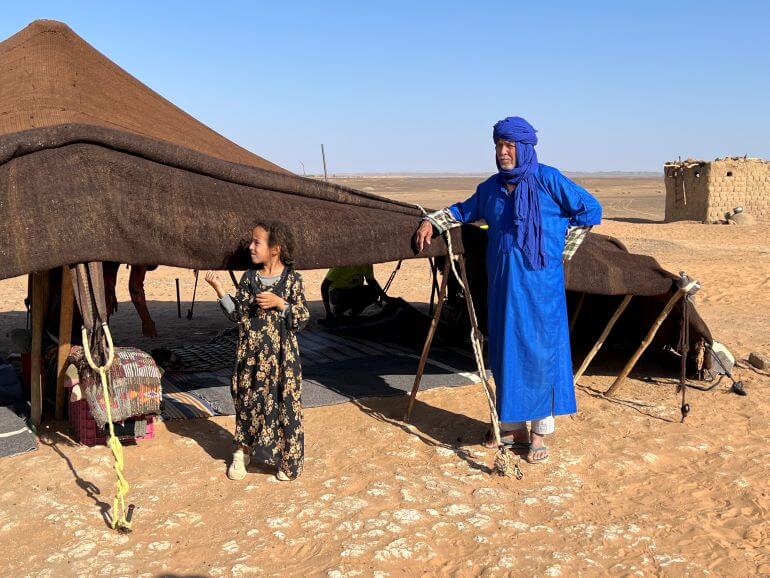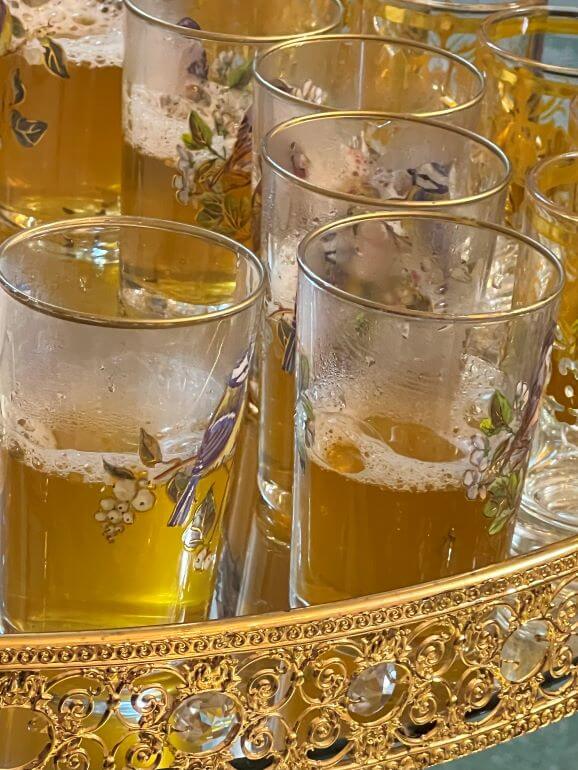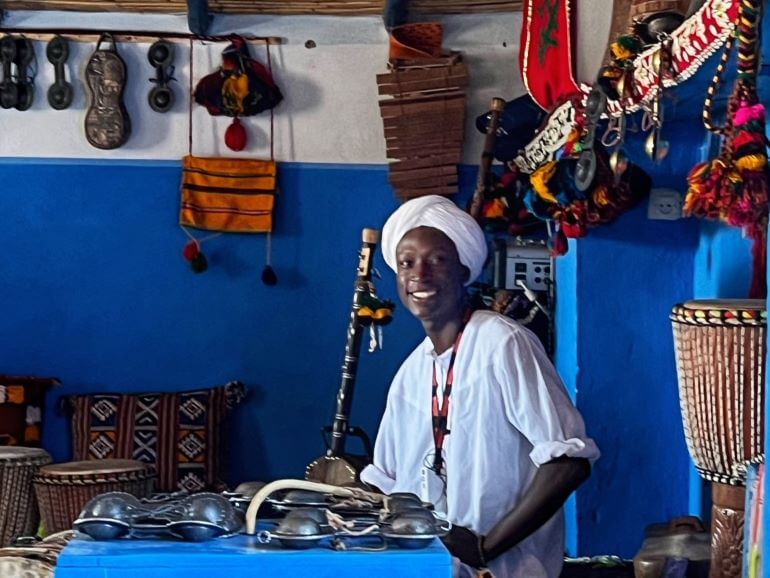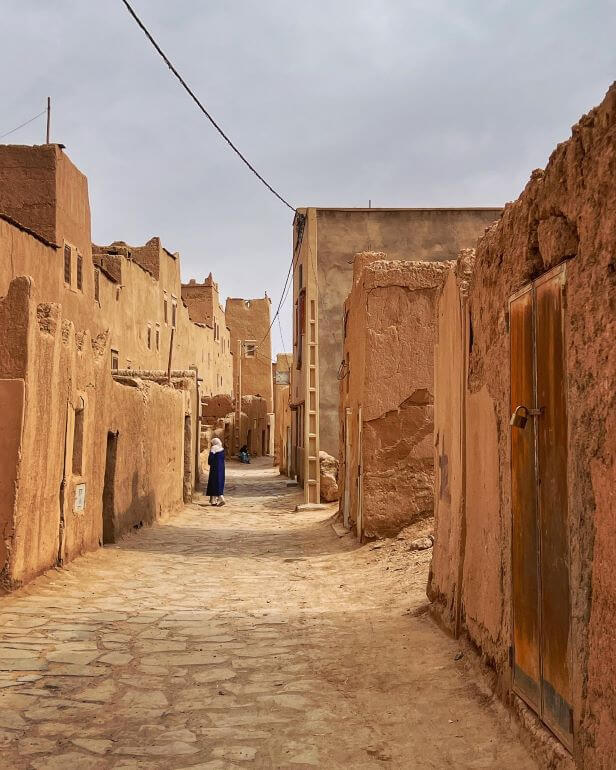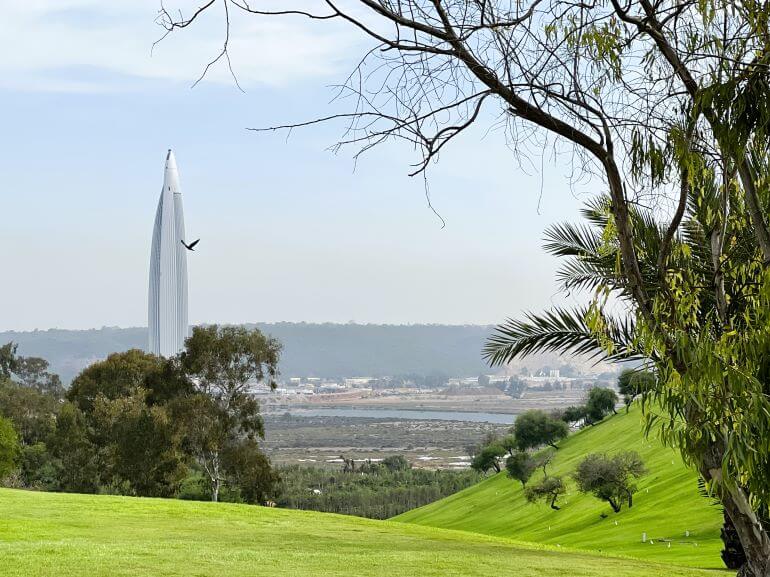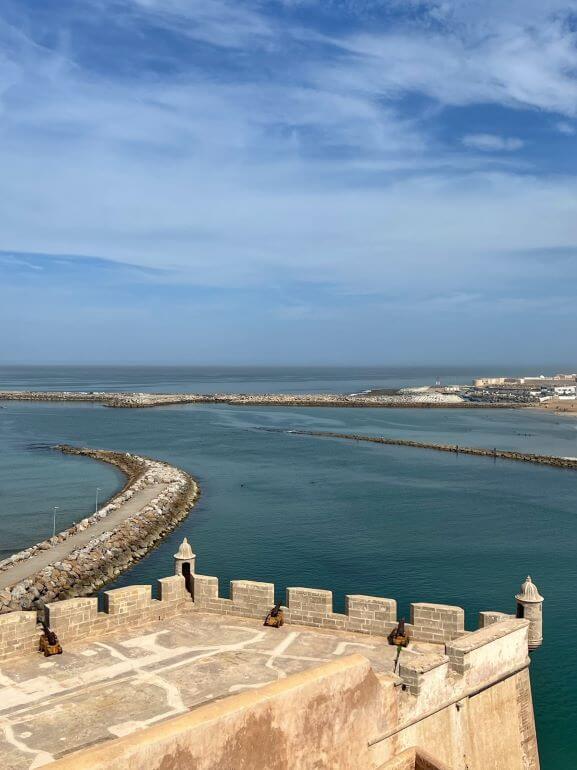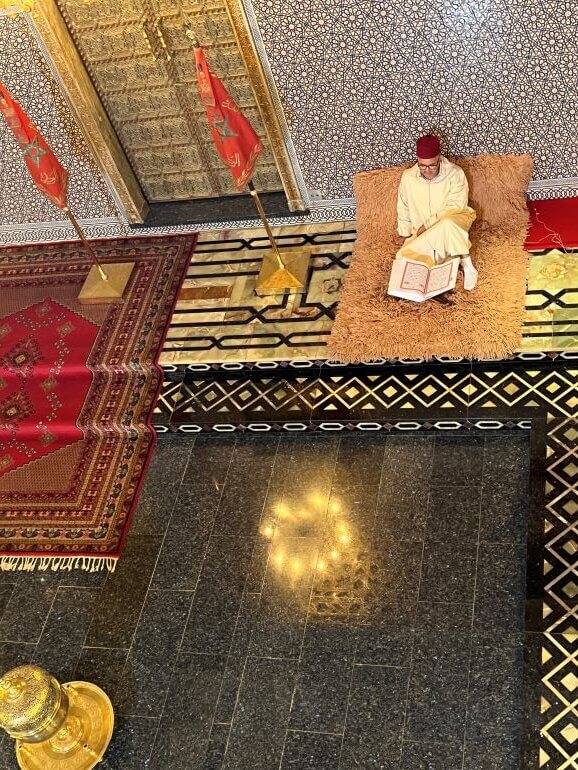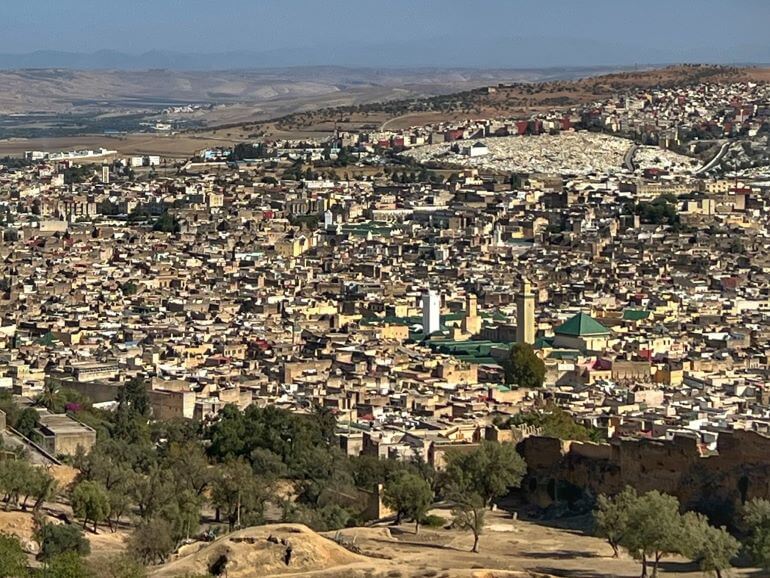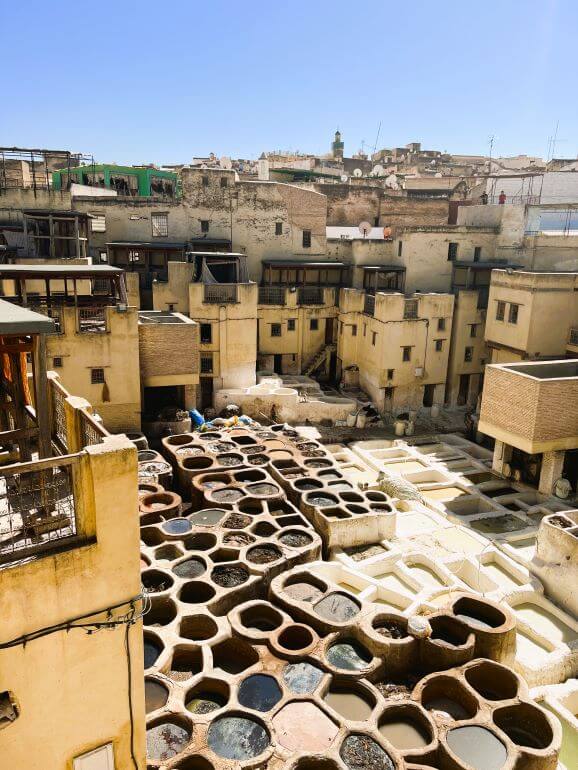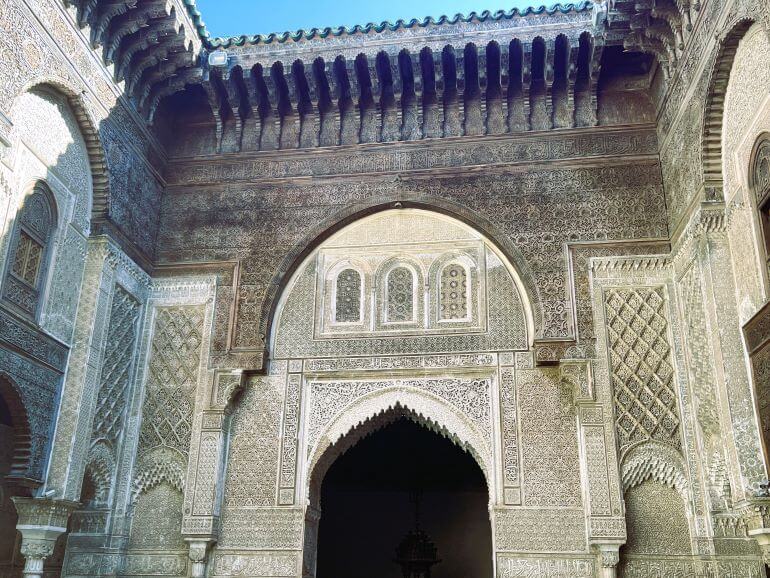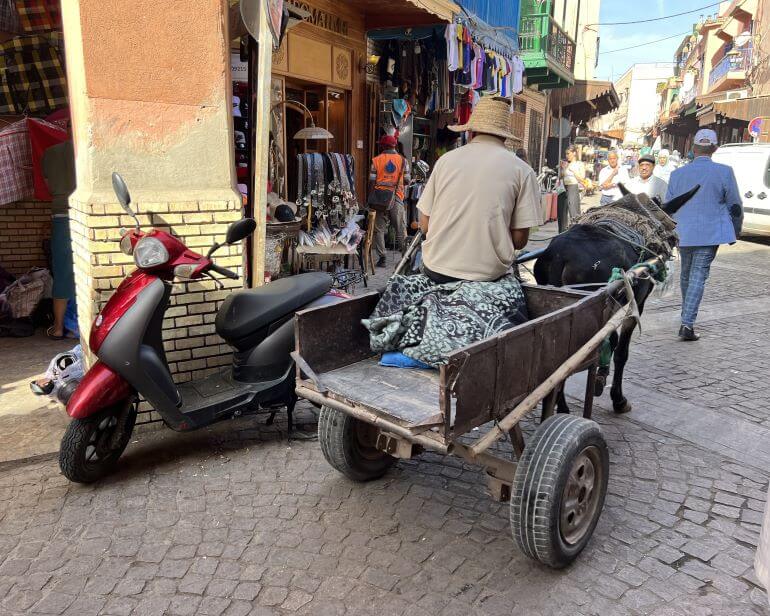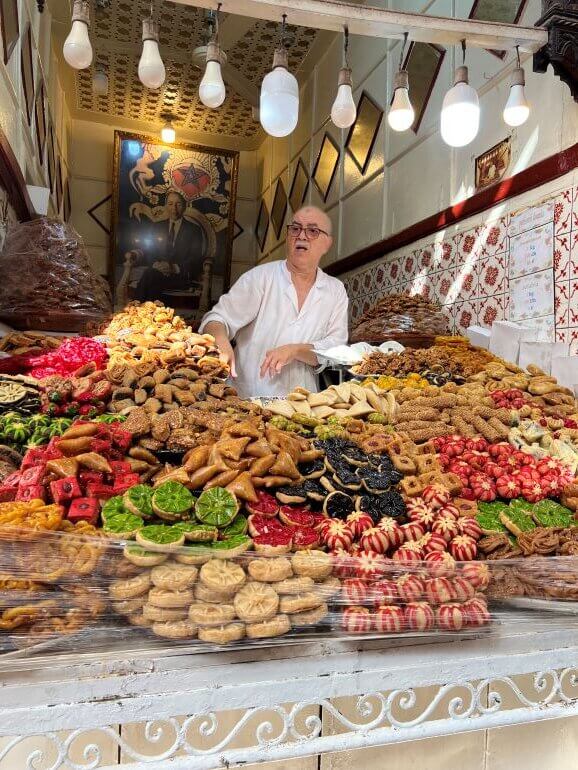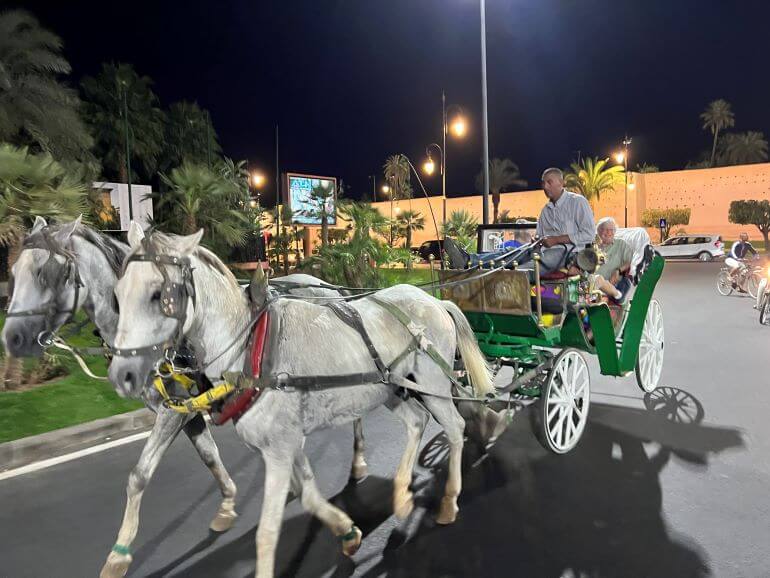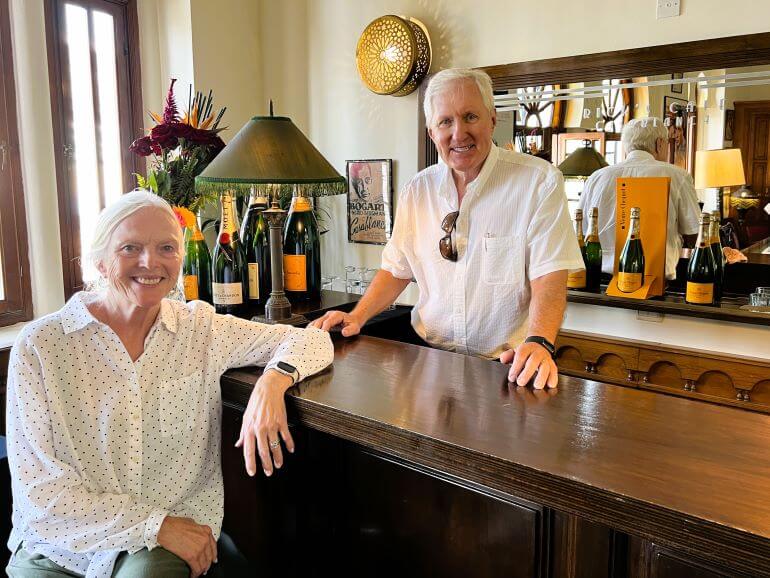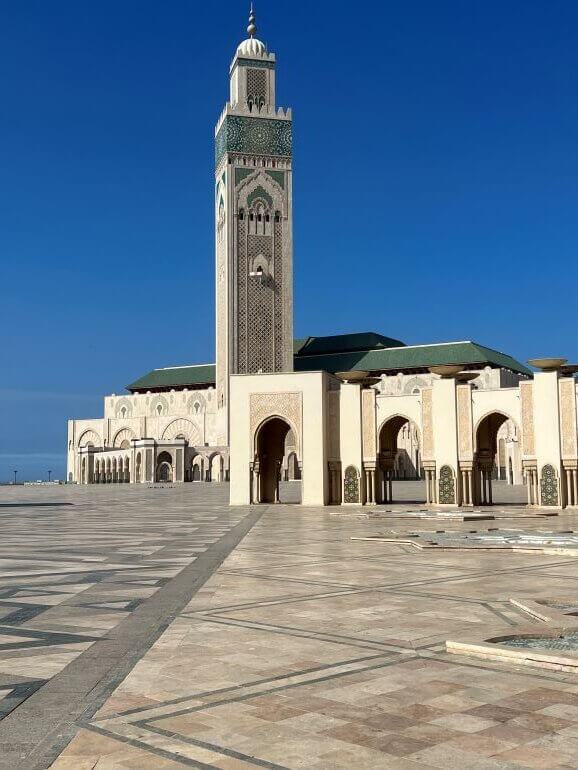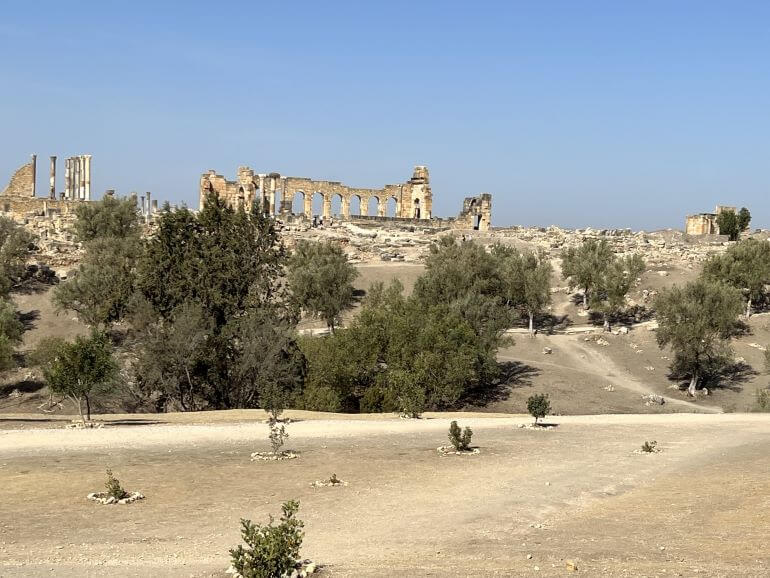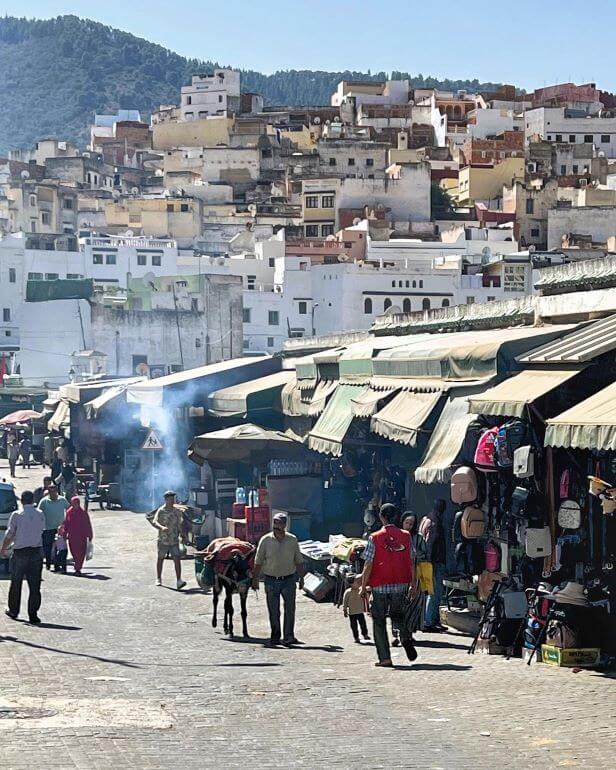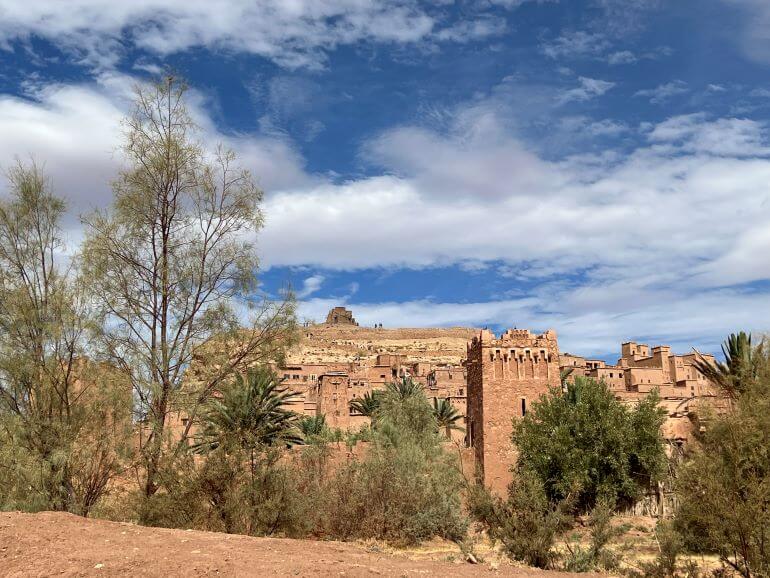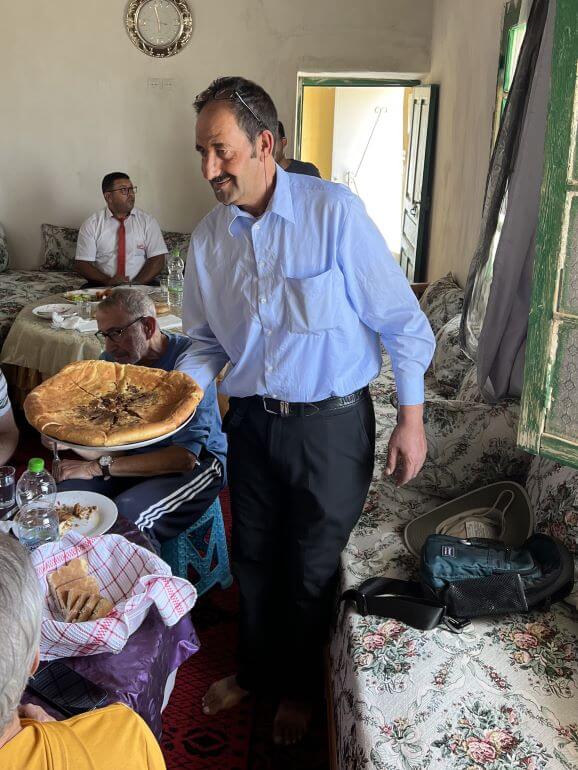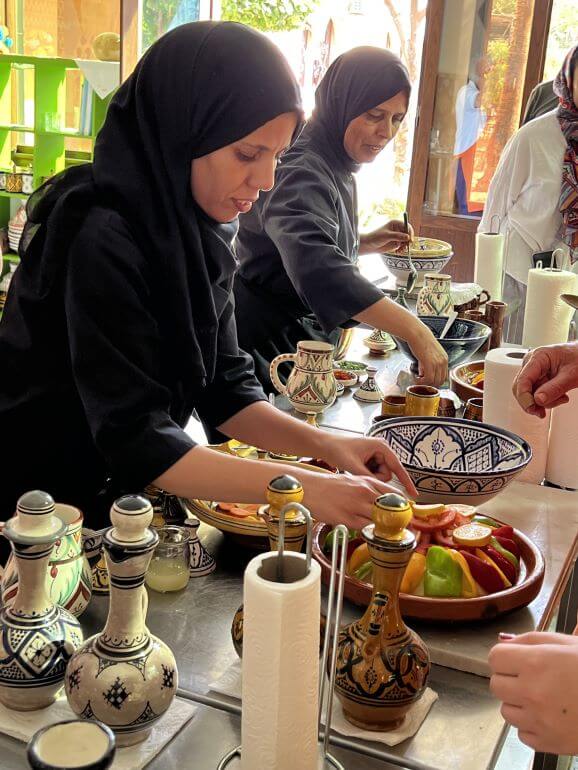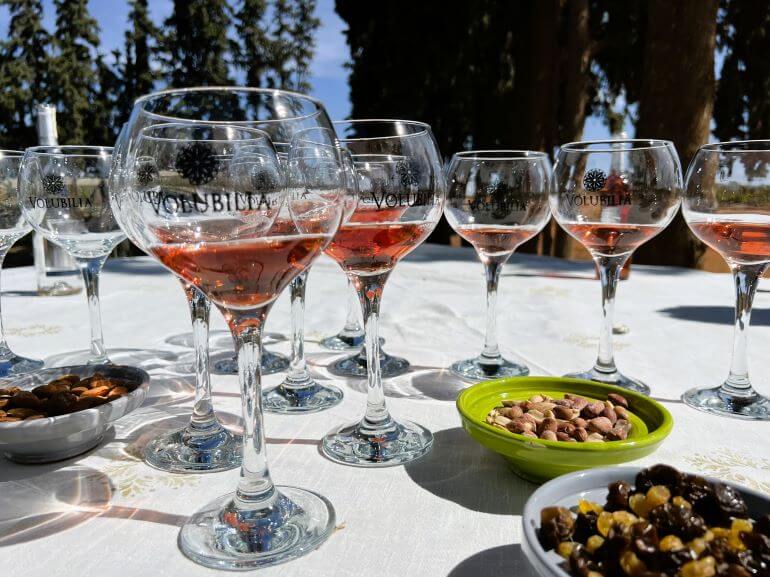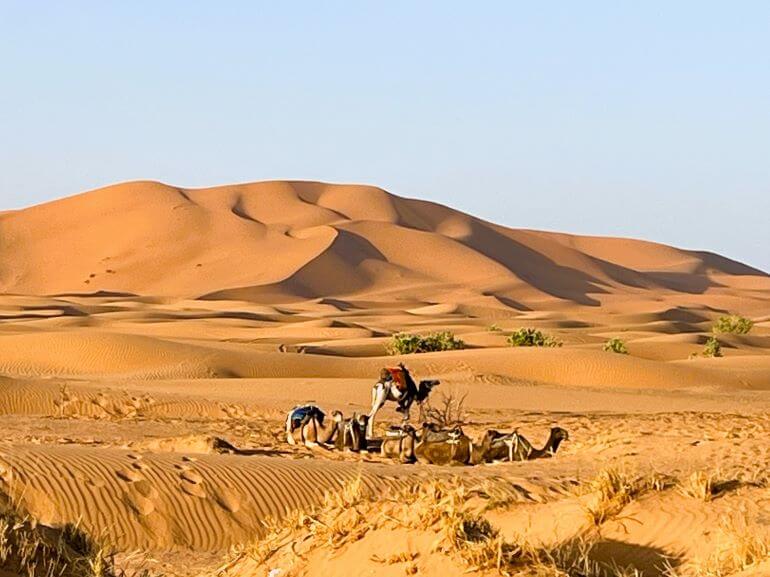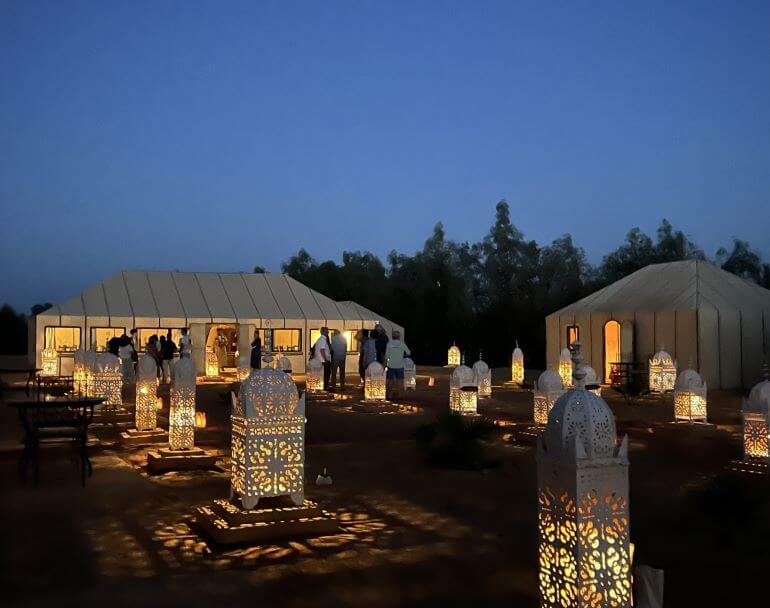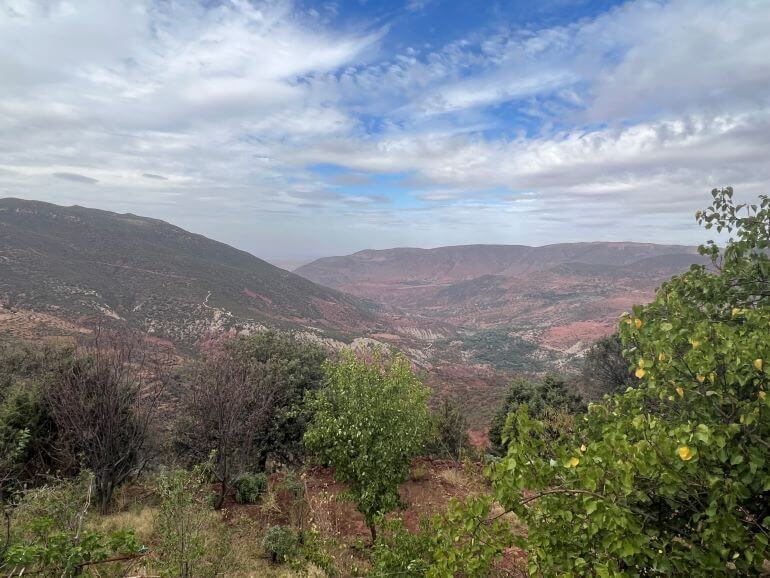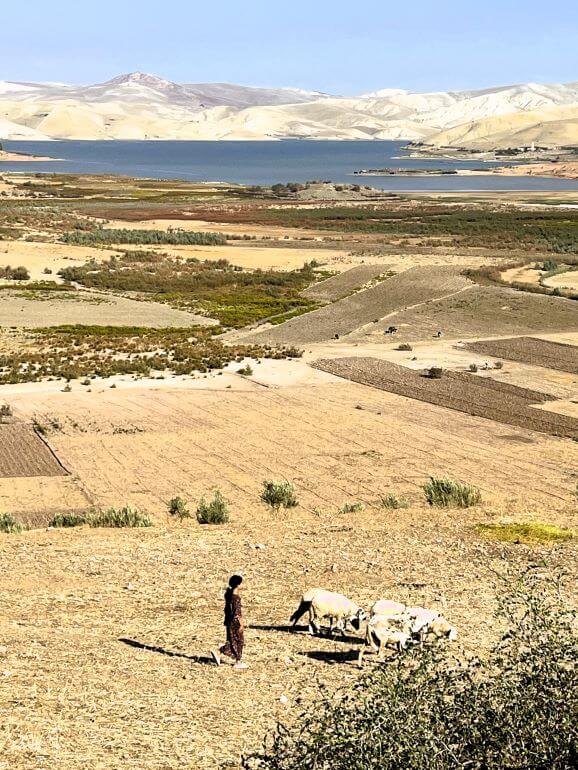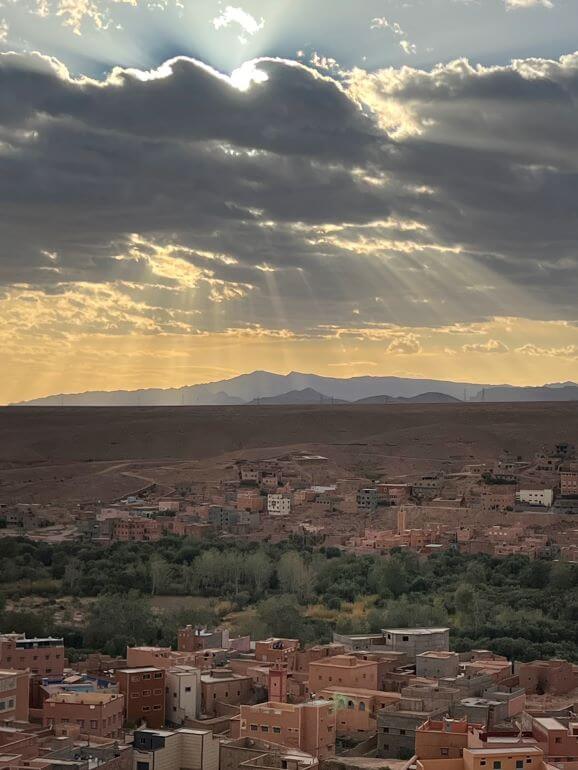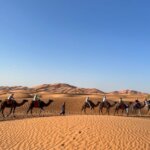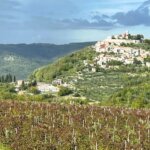- Special experiences on a Collette Morocco guided tour
- People, culture, and traditions of Morocco
- Meeting the people
- Mint tea ritual
- Gnawa people and music
- Jewish and Muslim heritage
- Exploring the cities and historic sites
- Rabat
- Fes
- Marrakech
- Casablanca
- Volubilis
- Moulay Idriss
- Ksar of Ait Ben-Haddou
- A taste of Morocco
- Traditional dishes
- Cooking class in Marrakech
- Moroccan wine surprise
- Adventure in the Sahara
- Taking in the diverse scenery
- Related posts:
Special experiences on a Collette Morocco guided tour
One of the things we appreciate about traveling is how new places and experiences give us a better understanding of the world and its people. During our “Colors of Morocco” guided tour with Collette, our first visit to Morocco and to the continent of Africa, we eagerly embraced every new experience. We were intrigued, educated, enchanted, and well-fed as we visited cities, rural areas, and the great Sahara Desert, broadening our horizons with a diversity of activities, locations, and interactions with the locals.
This post aims to give you a glimpse of our adventure with some highlights of our trip. There will be more to come in future posts.
People, culture, and traditions of Morocco
Meeting the people
Our tour manager Nabil, a Moroccan from a small village in the Atlas Mountains who now lives in the thriving city of Marrakech, represented the people of the country well and was our connection to meeting other Moroccans.
On a free night in Fes, we chose (along with most of our group) to join a local family, friends of Nabil’s, for dinner and conversation. They were warm and welcoming as we entered their apartment near our hotel, serving mint tea, cookies, and a delicious homemade traditional dinner. An unexpected pleasure was getting a chance to try on traditional kaftans.
It was a fascinating experience to meet a nomad family while we were staying in the Sahara. Driven in 4 x 4s from our camp, we came upon their living quarters consisting of basic shelters and a donkey resting nearby. With Nabil interpreting our questions and the elder family member’s answers, we learned about their daily lives and background. Although he had been always on the move as a younger man (aligning with our understanding of nomad), he and his children and grandchildren have been settled on this spot for about 10 years.
Mint tea ritual
An important aspect of Moroccan culture is the preparation and serving of mint tea. It is most always offered as a sign of welcome and hospitality and served in special small glasses. The tea is usually accompanied by small pastries or cookies.
Gnawa people and music
In Khamlia, we were introduced to the Gnawa people and their music. It was interactive we could participate with drums and we also got a little lesson on using several other instruments. The Gnawa people are an ethnic group with West African ancestry who were originally brought to Morocco as slaves. Their music and dance is an important part of their heritage.
Jewish and Muslim heritage
Inside the Ksar of El Khorbat, we learned about its rich Jewish and Muslim heritage and architecture and visited the museum with an extensive collection of artifacts, photos, maps, and drawings. Much of the old village (built in 1800s) is still inhabited.
Exploring the cities and historic sites
Rabat
Rabat, the country’s capital city, located on the Atlantic coast, was our first destination on the tour. With a blend of old and new that earned its designation as a UNESCO World Heritage Site, modern Rabat is best represented by the new opera house, the development of a 55-story tower (which when completed will be the third tallest in Africa), parks, and tree-lined boulevards.
Historical Rabat is seen in the Kasbah de Oudaias (dating from the 12th century), the remaining portions of the old city walls from the same time, the Hassan Tower (an unfinished minaret built for a large uncompleted mosque), and one of the many royal places in Morocco.
During a tour through the whitewashed buildings of the kasbah, we walked out to the large terrace to view the confluence of the Atlantic Ocean and the Bou Regreg river.
Our tour included a visit to the Mausoleum of Mohammed V (grandfather of the current king Mohammed VI) and the Tower of Hassan. Inside the beautiful mausoleum near the tomb of the king in the center, we also saw an imam who reads from the Koran throughout the day.
Fes
As the oldest city in Morocco, Fes has a very mysterious feel particularly in the medina with its thousands of maze-like alleys, souks (markets), and passageways. The diverse aromas and colors of the spices, crafts, meat (of many kinds including camel), jewelry, textiles, clothing, and more were tantalizing and quite different than any we’ve experienced in our previous travels. It would be easy to get totally lost here without a guide.
Hidden along dark passages of the medina was the entrance to a leather tannery where we looked down upon the huge vats of dye and perused the shops with many finished products such as jackets and bags.
Al-Qarawiyyin University, founded in 859, is the oldest continuously operating university in the world and it is a key landmark of the Fes Medina. The university and its ancient mosque are key reasons for the city’s designation as a UNESCO World Heritage Site.
Marrakech
Marrakech, the most well-known city for tourists, is a mix of magical, international flare, and old Morocco. In the medina, the narrow lanes are lined with vendors of all kinds, and donkey carts and motorbikes navigate the obstacles.
A delightful carriage ride at night through the residential streets from Jemaa el-Fnaa, the large main square at the medina, to our hotel was a highlight of our time in Marrakech.
Casablanca
Perhaps most well-known as the setting for the famous movie of the same name, Casablanca is a very large city with a population of about four million and is the financial and economic center of the country. We had only a brief time here, flying in and out of its international airport for the trip. But on our final day of the tour, we enjoyed a farewell lunch with our fellow Collette guests at Rick’s Café, not the original from the movie which was entirely filmed on a Warner Brothers studio set, but one that was built to resemble aspects of the fictional club. Not only did the restaurant capture the feel of Rick’s movie café, but the food is very good, too!
We also had a great tour of the Hassan II Mosque, the largest in Africa. Although most mosques in Morocco are not accessible to non-Muslims, this one is open to all visitors with a guide.
Volubilis
An optional day trip from Fes was a visit to Volubilis, a large expanse of impressive Roman ruins that is still only partially excavated. With our local guide, we walked along the ancient pathways of this UNESCO site past arches, forum, basilica, baths, houses, mosaics, olive presses, and other structural remains showcasing the amazing innovation of the ancient Romans.
Moulay Idriss
Just a few miles from Volubilis is the holy city of Moulay Idress. It is an important Muslim pilgrimage site as it houses the tomb of Morocco’s first Islamic ruler for whom it is named. We walked up the hill through the town on winding walkways to a restaurant for lunch after our visit to the ruins.
Ksar of Ait Ben-Haddou
On the “Road of a Thousand Kasbahs”, the ancient trading route between the Sahara and Marrakech, is Ksar Ait Ben-Haddou. The old ksar (village) is a stunning fortress established in the eighth century of defensive walls, towers, and residential buildings — some that were homes of wealthy traders.
A taste of Morocco
Traditional dishes
I’d really had no exposure to Moroccan food with the exception of couscous — which is found everywhere in Morocco.
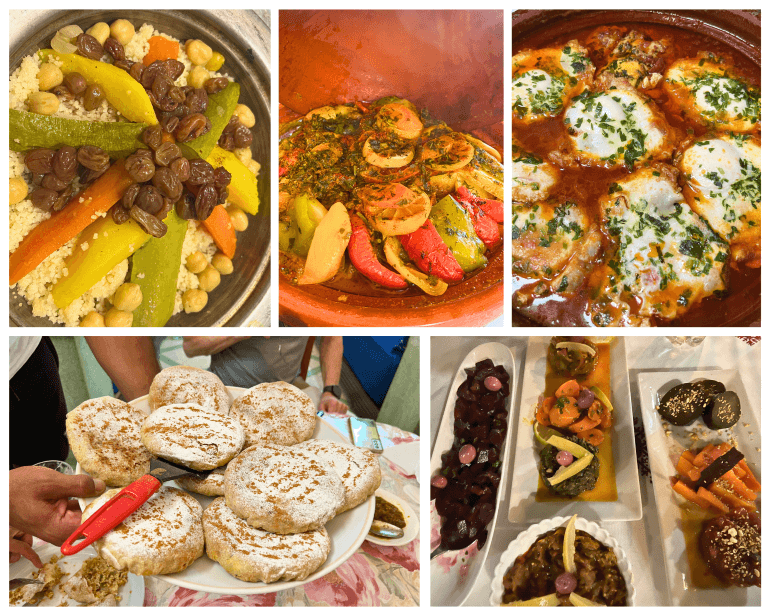
Traditional Moroccan dishes from top left — couscous, vegetable tajine, shakshuka, Moroccan salads, pastilla
We enjoyed the diversity of Moroccan meals and the delicious spices used in so many dishes. Some recipes have existed here for centuries. In the photo above is vegetable couscous; vegetable tagine; shakshuka, sort of a Moroccan omelet, consisting of eggs poached in a sauce of tomatoes, olive oil, peppers, onion, and garlic, and spices; Moroccan salads which are cold and hot vegetable dishes (beets, eggplant, tomatoes, carrots and other vegetables); Moroccan pastilla, which is a small phyllo-dough pie filled with chicken (or other meat including fish). In the photo below, a local host in a remote area of Morocco serves our group madfouna, a sort of Berber pizza, which was more a thick flat pie filled with meat and vegetable ingredients — quite tasty!
Cooking class in Marrakech
There is much to learn about Moroccan cooking and we got a chance to be hands on in the kitchen of the Amal Women’s Training Center. During a cooking class at the organization’s location in Marrakech, we also learned about the mission of this wonderful women’s training organization and enjoyed the dishes we prepared for lunch. The organization helps to empower women providing training and other assistance to these women in need.
Moroccan wine surprise
Are you surprised that there are wineries in Morocco since it is a predominately Muslim country? We were! A visit, tour, and lunch at a winery in Meknes was a lovely way to spend one of our afternoons. The weather was perfect for enjoying the beautiful outdoor setting. A special varietal we enjoyed along with very good red wines was their vin gris (grey wine). It is a light style of rosé that is made with red grapes, but in a style more common with white wine production.
Adventure in the Sahara
Our time in the western Sahara was an exciting and romantic experience — sleeping under the vast skies filled with bright stars in our luxury tents, riding camels, taking 4 x 4s for miles over the dunes, visiting a nomad family, listening to Berbers perform their local music and songs around a blazing campfire, and watching sunrises and sunsets over the dunes.
We were quite comfortable in our large tent equipped with modern amenities like running water, a shower, and flushing toilet. For breakfast and dinner, we met our fellow guests in the dining tent for delicious meals to enjoy while we talked about our day’s activities.
Taking in the diverse scenery
There was diverse scenery — at times beautiful, imposing, stark, and always interesting — throughout our tour. We enjoyed the landscapes, vegetation, and scenes of everyday life in the Atlas Mountains, valleys, villages, and on the vast plains.
Stay tuned for more about our Moroccan adventure.
Thanks to Collette for sponsoring our Moroccan tour. We loved it just as we loved our “Taste of the Balkans” tour with them last year.


